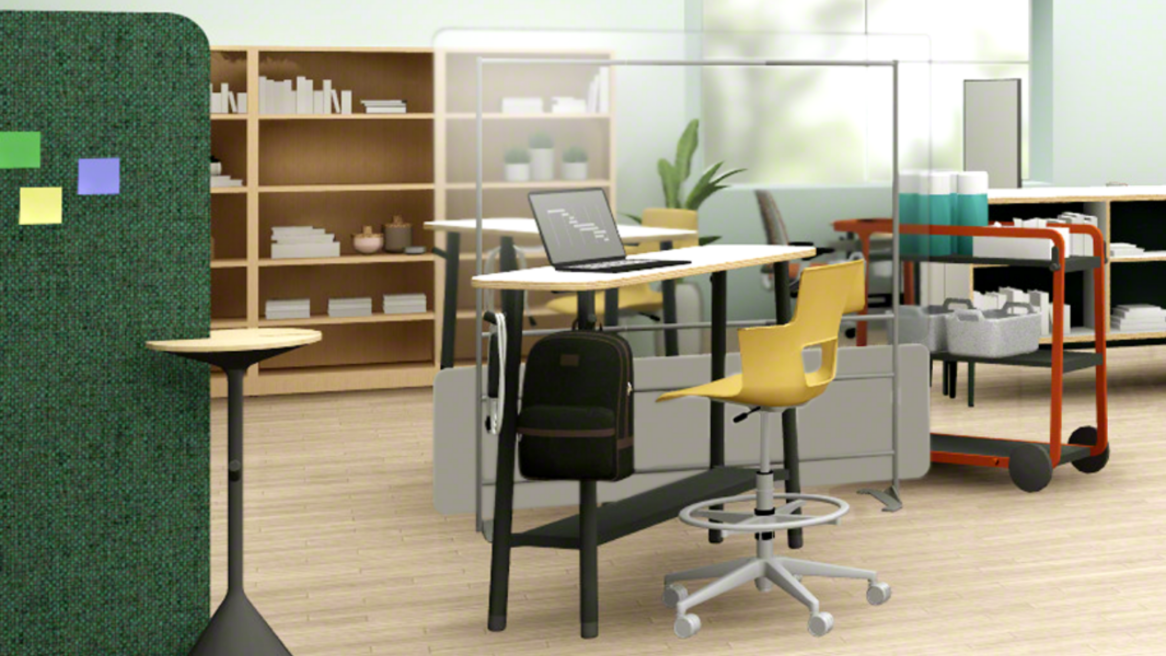This article is part of a series of updates to “Navigating What’s Next: The Post-COVID Workplace.”
At the height of school closings due to the COVID-19 pandemic,1.6 billion students were impacted in 193 countries. Educators and students at all levels grappled with how to transition unexpectedly and immediately online. Much like the mass working-from-home experiment for office workers, educators and students began to recognize what they were missing and embrace what was working.
Now, we have the opportunity to learn from what worked and what didn’t when living rooms and bedrooms became classrooms. When we combine our most recent learnings with years of previous research into blended learning models, we are able to develop insights into how to create the best hybrid classroom spaces and experiences. (Read about forces driving this approach: COVID-19 Accelerates Blended Learning).
Blended learning combines the best of face-to-face and online experiences to produce improved learning outcomes.
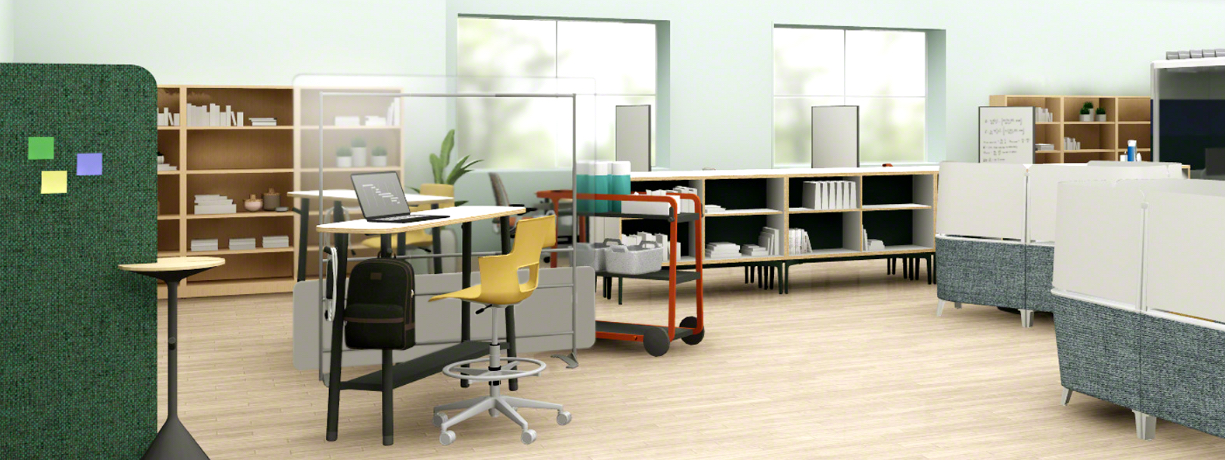
School planning & clarity, tech access and know-how make a difference
Research found key drivers made a significant difference in whether or not teachers and students had a good experience. When schools had alignment and clarity moving forward, students and teachers had a better time learning remotely. The same was true when all students had equitable access to the internet and devices, and when teachers had familiarity and effectively used tools and platforms. Students who practiced self-directed learning more easily adapted online. And transparent, meaningful and open channels of communication between schools, students, teachers and parents were incredibly important.
Key Insights
Steelcase researchers developed four key insights into blended learning based on research conducted before and during the pandemic.

On campus learning is shifting to higher-order skills and tailored experiences.
Instead of using class time to lecture at students, that content can be found online and instructors can use time with students to work on problem-solving, communication and collaboration.

Students and educators have a variety of levels of familiarity and comfort.
For every Microsoft Teams and Zoom expert, there’s someone struggling to un-mute. A variety of training and development and a “just right” amount of communication is required as institutions hone in on the right tools and the proper approaches to learning online.

Technology can disconnect us from others
Students' virtual experiences in the classroom can be isolating. They are either solitary –diverting focus from other people– or broadcast experiences in which a large group is exposed to a video. Online learning offers a greater opportunity for personalization, but is often text-heavy and lack, interaction.

The built environment is being asked to do more.
All spaces will have to support higher cognitive activities as well as help build community through spontaneous moments of connection and learning. Many learning environments are often not multi-functional, and as online activities extend where and when students learn, adjacent spaces such as labs, libraries and lounges play new purposeful roles in the mix of learning spaces.
Design Principles
Research and insights led to five design principles foundational to creating productive and safe blended learning environments.
 Open image tooltip
Open image tooltip Mindset + Preparedness
The physical environment can provide cues and indicate preparedness with supportive spaces and technologies and by reinforcing plans and communication. It’s important to have:
A strategic plan and alignment
Identified platforms and pedagogies
Access and equity for all
Support and communication
 Open image tooltip
Open image tooltip
SOCIAL CONNECTIONS
Learning happens best when people, technology and place are brought together in innovative ways. Space supports sought after social connections by:
Ensuring engagement with content and visibility on screen or in person.
Considering sightlines so those on-site can see and be seen by remote participants.
Being sensitive to presence disparity so remote and on site participants can contribute equally.
 Open image tooltip
Open image tooltip
HIGHLY FLEXIBLE
Classrooms and informal spaces must be highly flexible to support new learning behaviors resulting from new technologies. Spaces should support:
New ways of learning like hands-on activities and shifts from one mode of learning to another.
Modifiability (user-adaptable space) and convertibility (repurposing space like a gym becoming a classroom).
Loosening spatial boundaries by valuing “in-between places” outside the classroom for learning.
 Open image tooltip
Open image tooltip Hosting + Integration
Hosting technology is key for blended learning environments. It’s important to:
Distribute power throughout the room.
Design for video streaming and capture — considering camera angles and multiple displays for content and remote users.
Support “pixels and pencils” — digital and analog tools such as whiteboards visualize and share thinking in tandem.
Consider what’s next — voice interfaces, AI and VR are already being tested to augment learning.
 Open image tooltip
Open image tooltip DENSITY, GEOMETRY + DIVISION
Blended learning can help reduce density, but distancing requirements must still be kept in mind. It’s necessary to consider:
Reducing density by removing chairs or desks and repurposing larger unused spaces like gyms or libraries as classrooms.
Changing geometry by rotating desks 90-degrees to face in different directions. A checkerboard pattern can create more space around students.
Adding division with user-configurable screens to offer a barrier and autonomy.
Blended Learning Environments
Activating key principles in classrooms, labs, collaborative, social and faculty spaces enhances blended learning.
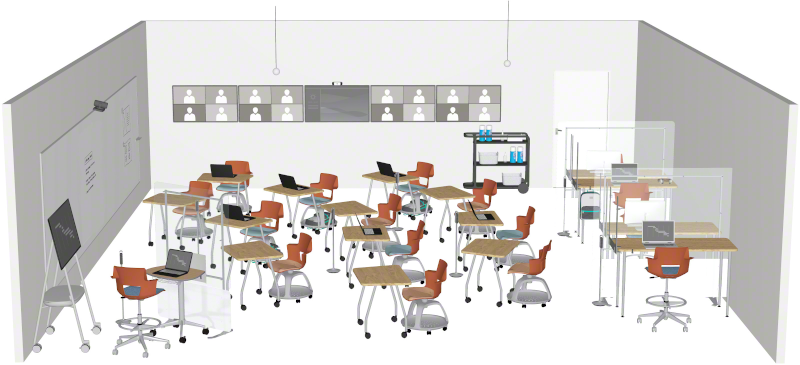
If students are unable to join in person, remote learners have “presence” through wall displays. Ceiling mounted microphones support acoustics.
This lab-style classroom is optimized for technology sharing. Triangulation supports sightlines to digital content and allows eye-to-eye interactions.
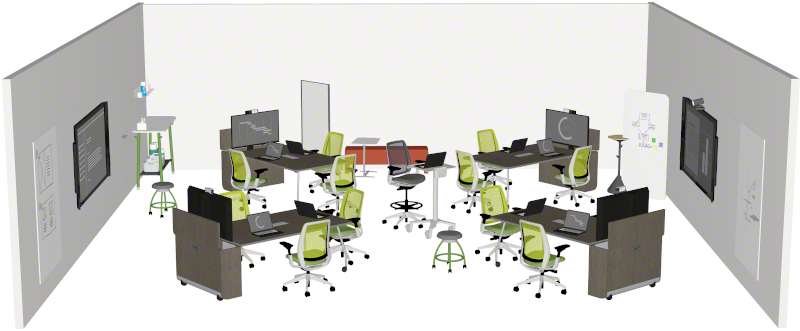
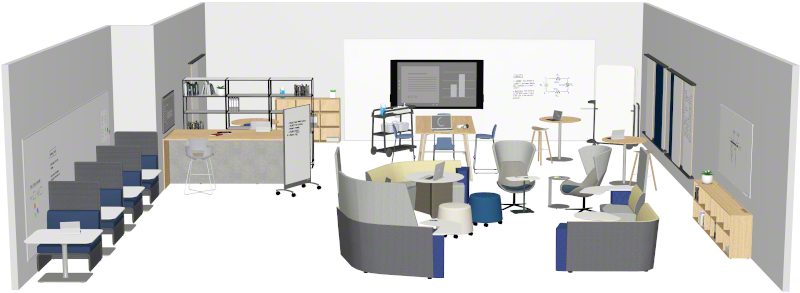
This multipurpose classroom can be used as a dedicated classroom or a shared space, such as an instructional innovation lab.
Online instruction blends real-time in person learning experiences and virtual team activities.
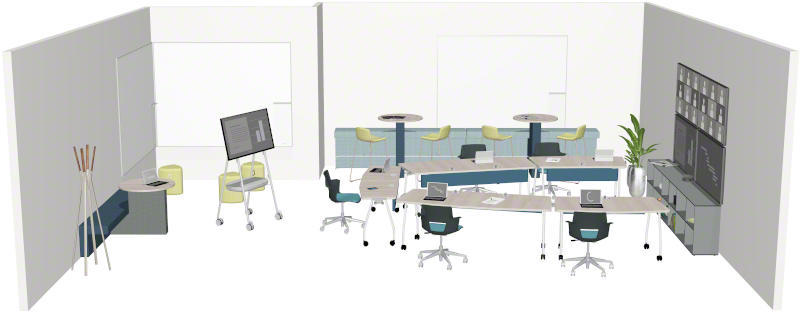
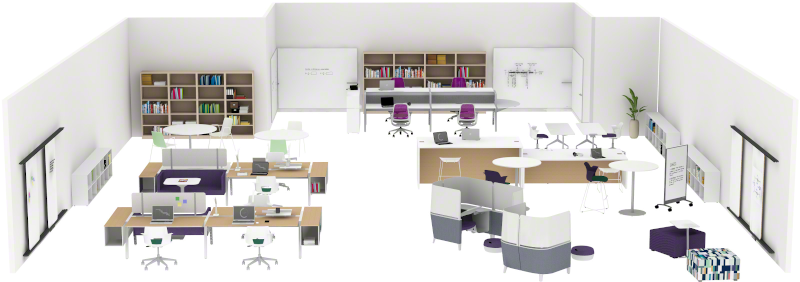
Students can select their best place or posture for learning. Collaborative technology makes it easy to share information or review work with peers or instructors.
Educator Spaces
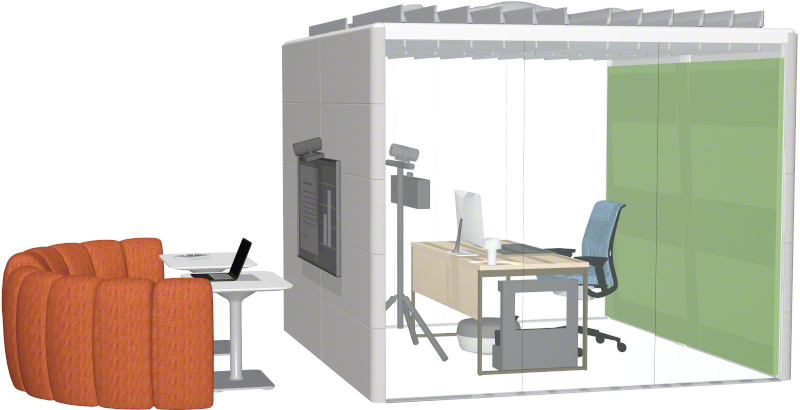
This thoughtfully-placed acoustic pod provides space and tools to support distance learning and can be used by multiple faculty members.
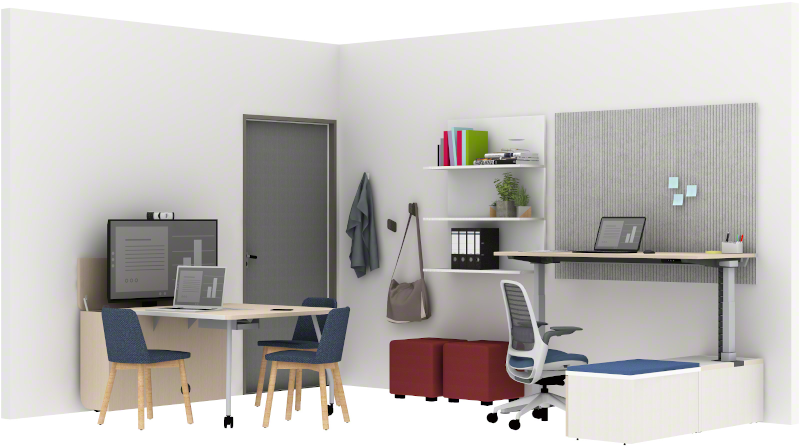
As the demands on faculty increase, the private office is a space where faculty can retreat and rejuvenate.
Increasingly, online activities are shaping our offline spaces. To learn more about how the built environment can support blended learning, visit our thought starters.

